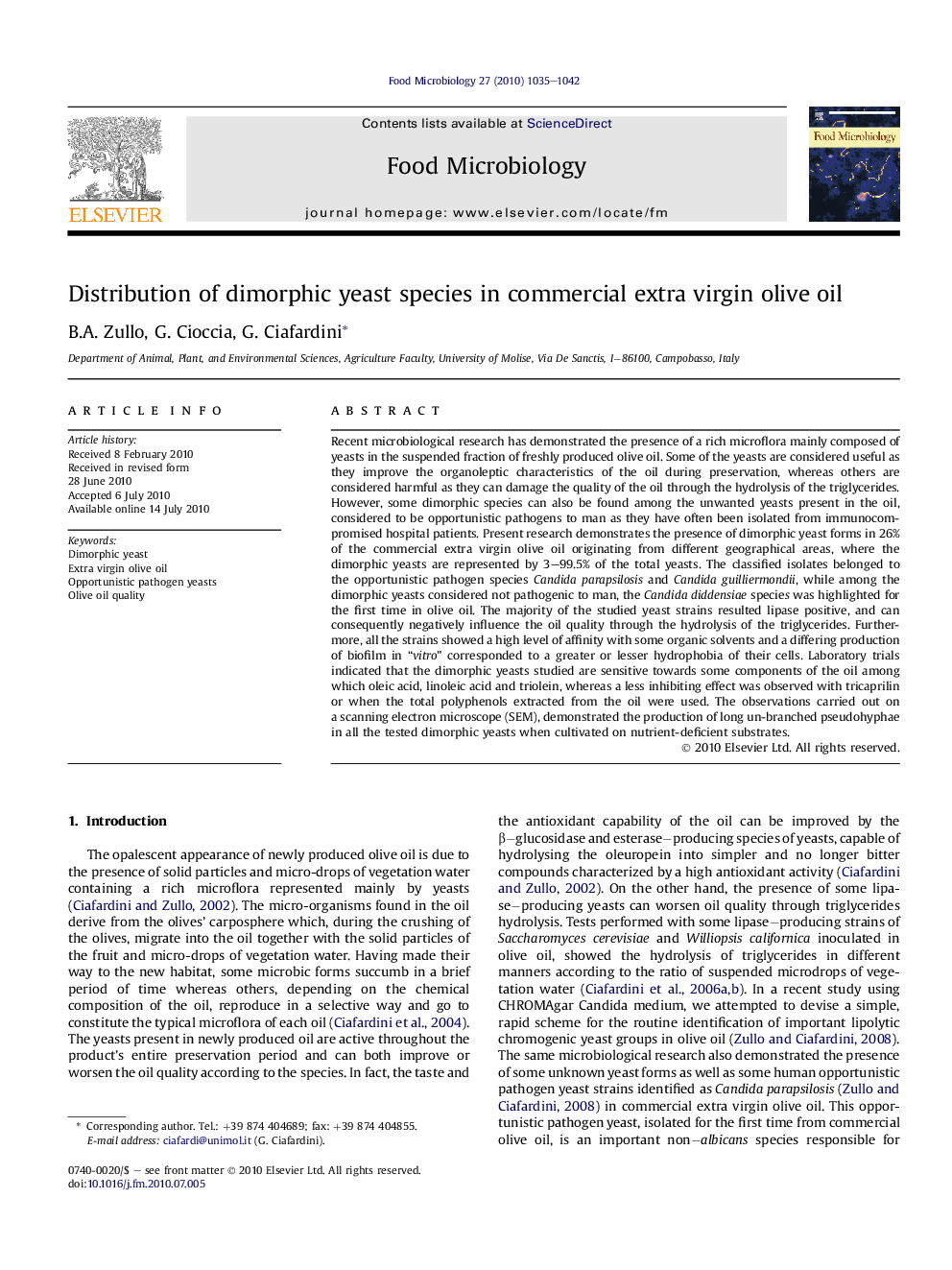| کد مقاله | کد نشریه | سال انتشار | مقاله انگلیسی | نسخه تمام متن |
|---|---|---|---|---|
| 4363345 | 1301552 | 2010 | 8 صفحه PDF | دانلود رایگان |

Recent microbiological research has demonstrated the presence of a rich microflora mainly composed of yeasts in the suspended fraction of freshly produced olive oil. Some of the yeasts are considered useful as they improve the organoleptic characteristics of the oil during preservation, whereas others are considered harmful as they can damage the quality of the oil through the hydrolysis of the triglycerides. However, some dimorphic species can also be found among the unwanted yeasts present in the oil, considered to be opportunistic pathogens to man as they have often been isolated from immunocompromised hospital patients. Present research demonstrates the presence of dimorphic yeast forms in 26% of the commercial extra virgin olive oil originating from different geographical areas, where the dimorphic yeasts are represented by 3–99.5% of the total yeasts. The classified isolates belonged to the opportunistic pathogen species Candida parapsilosis and Candida guilliermondii, while among the dimorphic yeasts considered not pathogenic to man, the Candida diddensiae species was highlighted for the first time in olive oil. The majority of the studied yeast strains resulted lipase positive, and can consequently negatively influence the oil quality through the hydrolysis of the triglycerides. Furthermore, all the strains showed a high level of affinity with some organic solvents and a differing production of biofilm in “vitro” corresponded to a greater or lesser hydrophobia of their cells. Laboratory trials indicated that the dimorphic yeasts studied are sensitive towards some components of the oil among which oleic acid, linoleic acid and triolein, whereas a less inhibiting effect was observed with tricaprilin or when the total polyphenols extracted from the oil were used. The observations carried out on a scanning electron microscope (SEM), demonstrated the production of long un-branched pseudohyphae in all the tested dimorphic yeasts when cultivated on nutrient-deficient substrates.
Journal: Food Microbiology - Volume 27, Issue 8, December 2010, Pages 1035–1042